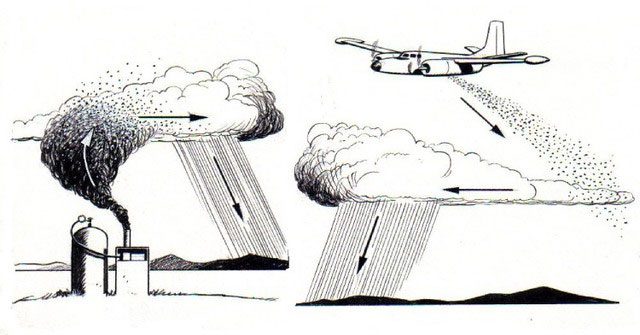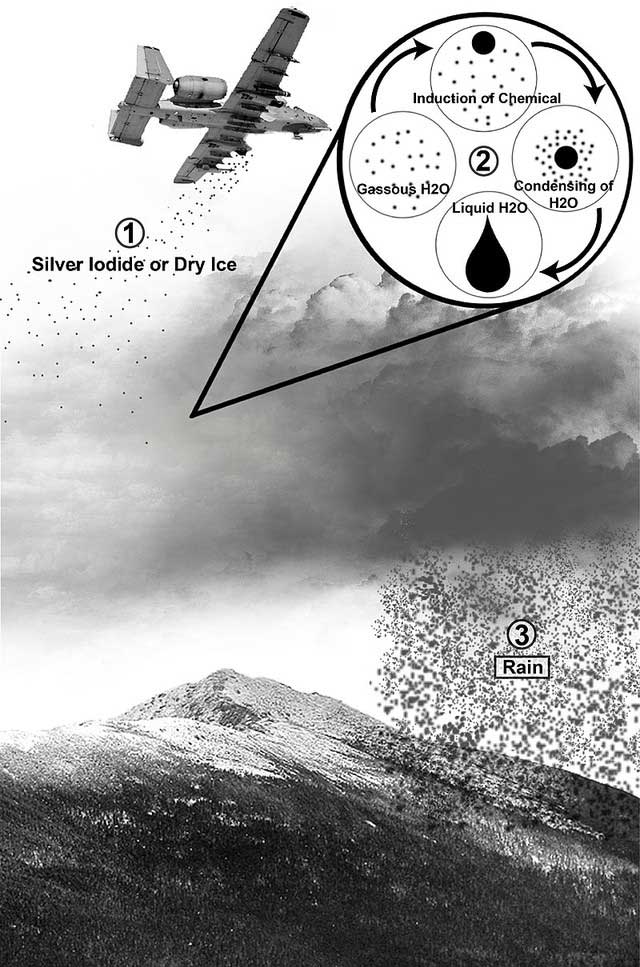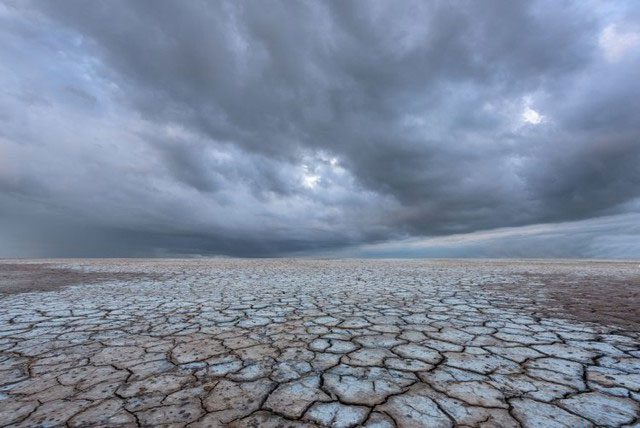The population of Dubai has increased from under one million in 2002 to over 3.5 million in 2022. With the exponential growth of the city’s population, providing sufficient resources for all residents has become a significant challenge.
Although the city has undergone a dramatic transformation over the past few decades, it still faces typical desert weather conditions, namely hot and arid climates. However, technological advancements have allowed Dubai to take control of its weather! With the power of cloud seeding, they can now create rainstorms at will to supplement their water supply.
What is Cloud Seeding and How Does It Work?

The cloud seeding process. Cloud seeding can be performed using ground generators, aircraft, or rockets.
Cloud seeding is a method of adding chemical compounds to clouds to induce rain. Silver iodide particles are dispersed through planes or drones, acting as condensation nuclei or ice nuclei, which trigger precipitation. Vincent J. Schaefer, an American chemist and meteorologist, conducted the first cloud seeding experiment in 1946.

The Beechcraft King Air C90 used for cloud seeding in the UAE.
Chemical particles are dispersed into supercooled clouds, which are below the freezing point of water. These chemical particles act as nuclei, providing a surface for water droplets to form. As more water droplets condense around this surface, they begin to form ice crystals. These small crystals grow rapidly as surrounding water vapor adheres to them, creating snowflakes. Once they reach a certain weight, the snowflakes fall as rain.

This illustration explains cloud seeding, showing a substance – silver iodide – being poured onto a cloud, subsequently resulting in rainfall. The process displayed at the top right depicts what happens within the cloud and the condensation process on the materials introduced.
Why is the UAE Heavily Investing in This Technology?
Since 2021, the United Arab Emirates has been utilizing new technology: drones equipped with charge generators and custom sensors flying at low altitudes to provide charge to air molecules. This method successfully produced significant rainfall in July 2021.
A study shows that the average UAE citizen consumes 132 gallons (500 liters) of water per day. This figure is considerably higher than that of the UK (334 liters per day), Asia (95 liters per day), and Africa (47 liters per day).
Desalination plants currently meet Dubai’s water demands. However, each of these facilities costs over $1 billion to build and requires a significant amount of energy to operate. Experts believe that cloud seeding could be a much more cost-effective alternative.
Nine rain enhancement projects have received over $15 million in investments to improve the meager annual rainfall in Dubai. The UAE Weather Center is employing drones to target electrified clouds using focused lasers to cluster water droplets in the air, inducing rainfall.

In countries like China, India, and the United States, artificial rain is created to combat prolonged heat waves. The UAE has pursued cloud seeding technology for the past 10 years, which has helped increase annual rainfall by up to 30%.
In fact, cloud seeding can be performed anywhere. Researchers in the United States are considering using this technology to enhance water reserves in the Western region.
Similarly, Indian scientists have proposed implementing this method in Delhi to improve air quality. China’s seeding program is also seen as an ambitious project aimed at raising the water levels of the Yangtze River, which is diminishing at certain points.
In Southeast Asia, open burning haze is polluting the regional environment. Cloud seeding techniques have been used to improve air quality by promoting rainfall. In Malaysia, cloud seeding was first used in 1988 for three purposes: filling reservoirs, mitigating haze impact, and firefighting. Starting in 2015, cloud seeding has been conducted daily in Malaysia since haze began appearing in early August.
However, cloud seeding technology also carries some risks. The byproducts used in this process can seep into crops, drinking water, and come into contact with skin. There are concerns that these compounds persist in the atmosphere and pose cancer risks to humans. Only time will reveal how effective and safe cloud seeding truly is, but for now, the UAE continues to refine this technology to ensure they never run out of water!



















































